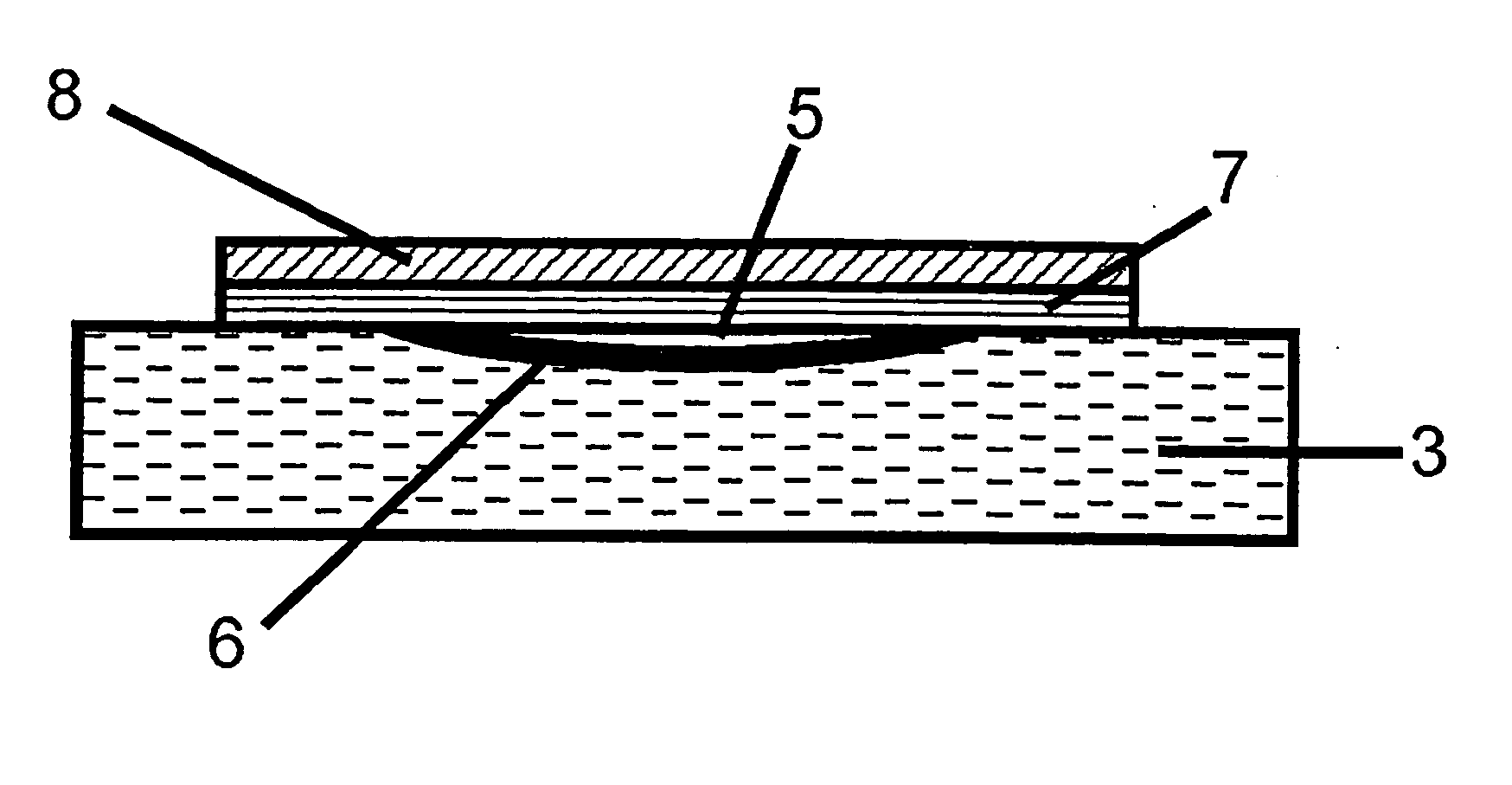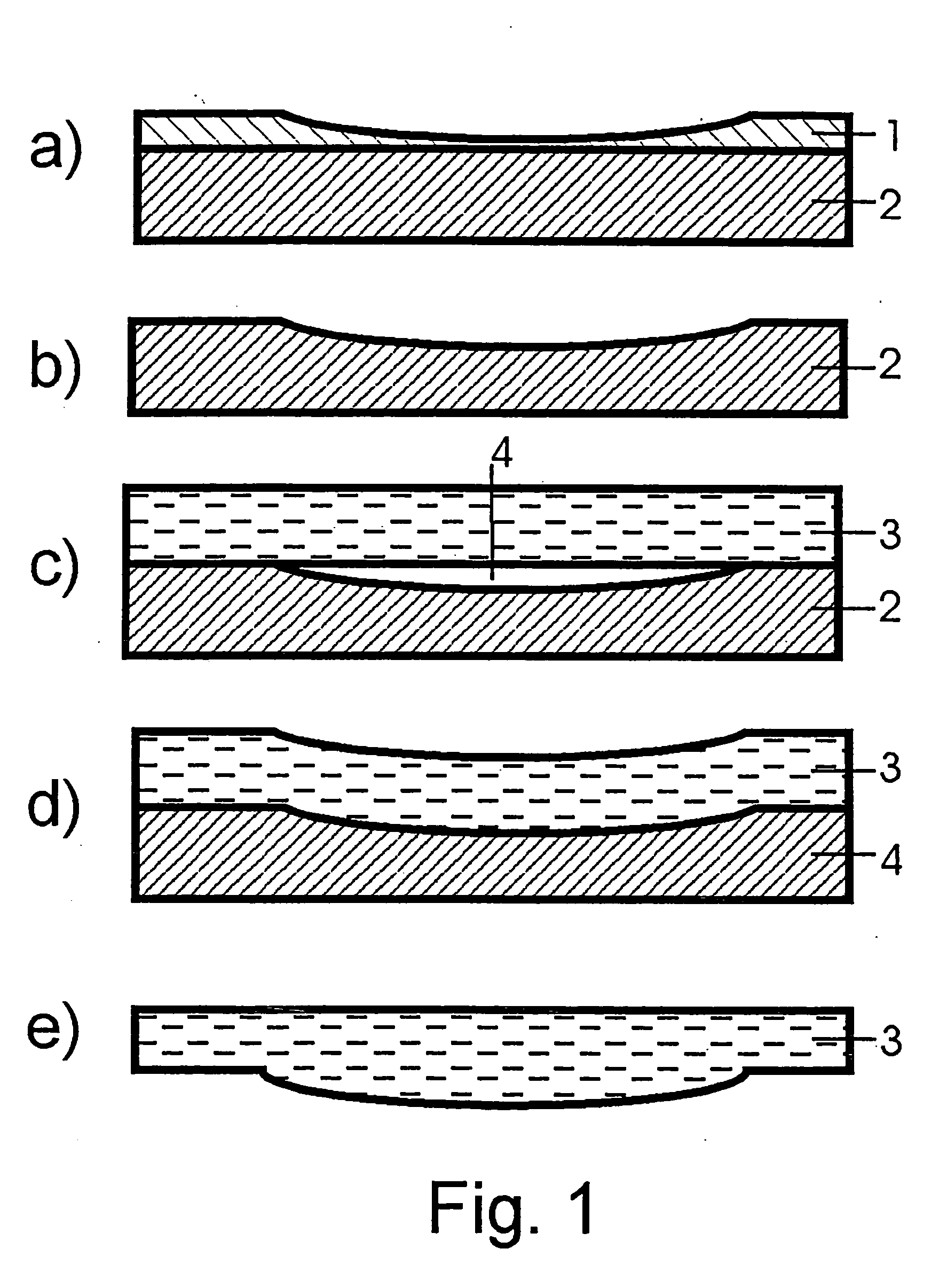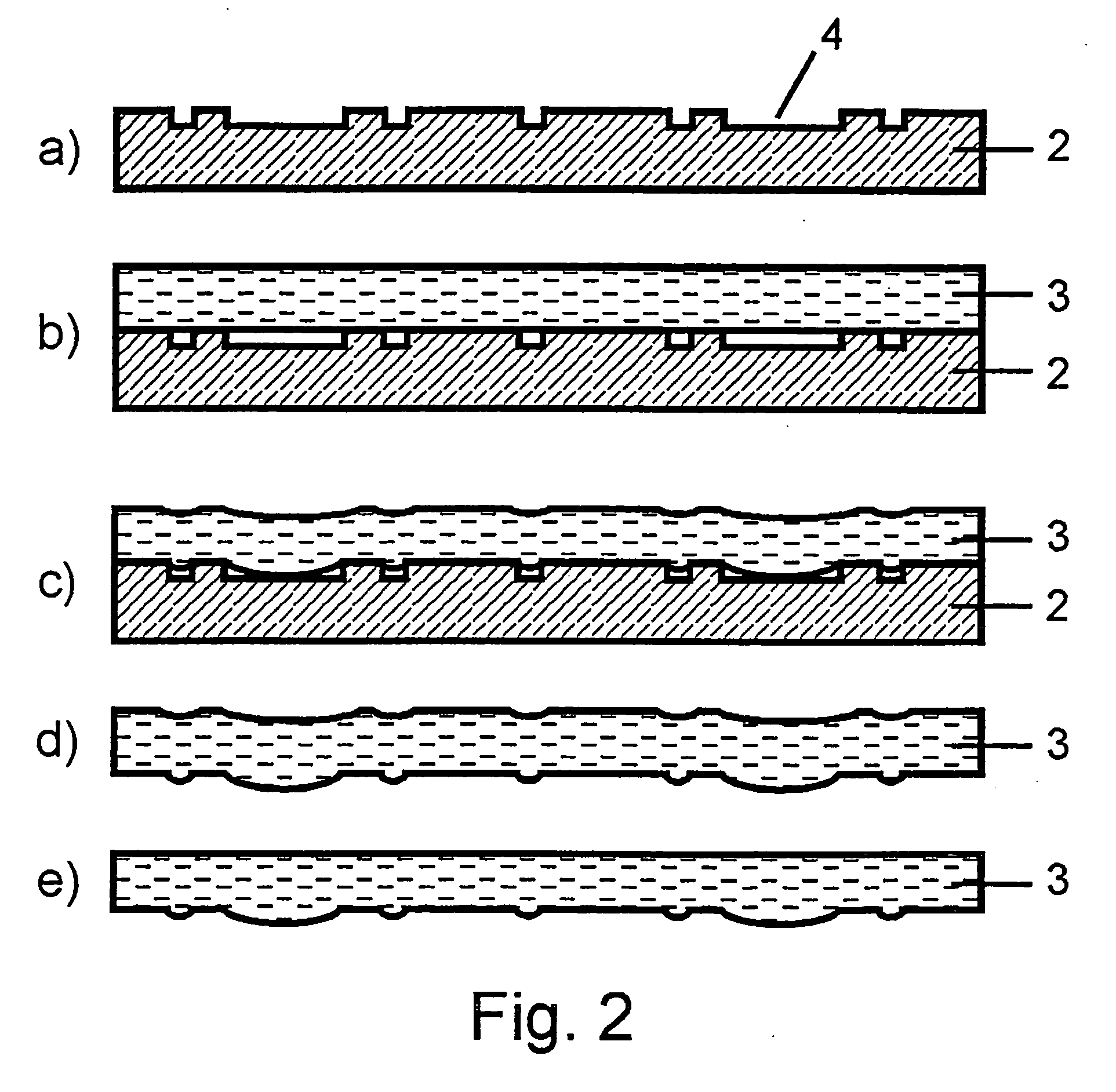Method for producing micromechanical and micro-optic components consisting of glass-type materials
a technology of glass-type materials and micro-optic components, which is applied in the direction of glass shaping apparatus, electrostatic generators/motors, cameras, etc., can solve the problems of poor surface quality, strong restriction of precision and shape variation, and limited lateral dimension, so as to achieve precise and low-cost shaping of elements
- Summary
- Abstract
- Description
- Claims
- Application Information
AI Technical Summary
Benefits of technology
Problems solved by technology
Method used
Image
Examples
Embodiment Construction
[0040]FIG. 1 illustrates various stages of a process for the manufacture of a micro-structure glass surface with application of the inventive method for projecting a structured silicon surface. These are manufacturing stages following the completion of the following operating steps: [0041] (a) formation of a structure in the photo resist (1), [0042] (b) transfer of the structure by etching the photo resist and the surface of the silicon wafer (2), [0043] (c) anodic bonding of a Pyrex® glass wafer (3) onto the silicon surface structure with recesses (4), preferably under conditions resembling a vacuum, [0044] (d) annealing and inflow of the glass into the silicon surface structures under the action of overpressure and / or required by the difference in pressure between the furnace atmosphere and the pressure situation created in the anodic bonding process and preserved in the silicon surface recesses, [0045] (e) grinding and polishing the glass surface turned away from the silicon, aft...
PUM
| Property | Measurement | Unit |
|---|---|---|
| wavelengths | aaaaa | aaaaa |
| wavelengths | aaaaa | aaaaa |
| size | aaaaa | aaaaa |
Abstract
Description
Claims
Application Information
 Login to View More
Login to View More - R&D
- Intellectual Property
- Life Sciences
- Materials
- Tech Scout
- Unparalleled Data Quality
- Higher Quality Content
- 60% Fewer Hallucinations
Browse by: Latest US Patents, China's latest patents, Technical Efficacy Thesaurus, Application Domain, Technology Topic, Popular Technical Reports.
© 2025 PatSnap. All rights reserved.Legal|Privacy policy|Modern Slavery Act Transparency Statement|Sitemap|About US| Contact US: help@patsnap.com



